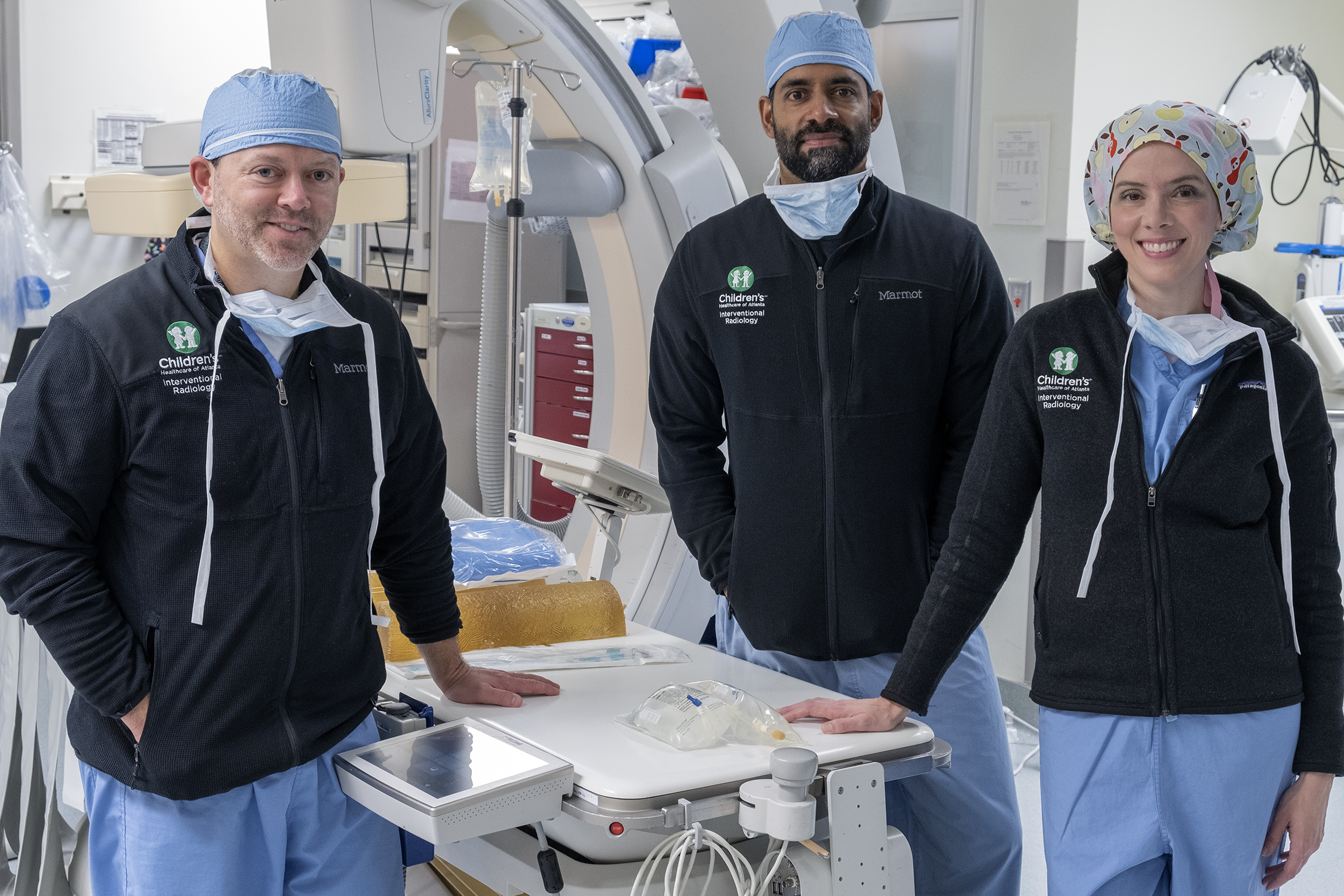Application

The Emory Department of Radiology and Imaging Sciences offers a one-year non-ACGME-accredited fellowship in Pediatric Interventional Radiology (PIR) to promising, qualified physicians.
Candidates must
- Have completed or be scheduled to complete an ACGME (American) or RCPSC (Canadian) accredited interventional radiology residency program or a diagnostic radiology residency program with additional years of training in interventional radiology prior to July 1 of the fellowship year, and
- Hold an MD or equivalent and meet requirements for medical licensure in the state of Georgia.
Our fellowship program accepts applications beginning September 1 of each year. Interviews will be offered beginning September 15. Applicants should send an updated CV and a letter of intent to Program Director Dr. Anne Gill at anne.gill@emory.edu.
Emory is an equal opportunity employer, and qualified applicants will receive consideration for employment without regard to race, color, religion, sex, national origin, disability, protected veteran status or other characteristics protected by state or federal law. Emory University does not discriminate in admissions, educational programs, or employment, including recruitment, hiring, promotions, transfers, discipline, terminations, wage and salary administration, benefits, and training. Students, faculty, and staff are assured of participation in university programs and in the use of facilities without such discrimination. Emory University complies with Section 503 of the Rehabilitation Act of 1973, the Vietnam Era Veteran's Readjustment Assistance Act, and applicable executive orders, federal and state regulations regarding nondiscrimination, equal opportunity, and affirmative action (for protected veterans and individuals with disabilities). Inquiries regarding this policy should be directed to the Emory University Department of Equity and Civil Rights Compliance, 201 Dowman Drive, Administration Building, Atlanta, GA 30322. Telephone: 404-727-9867 (V) | 404-712-2049 (TDD).
Emory University is committed to providing reasonable accommodations to qualified individuals with disabilities upon request. To request this document in an alternate format or to request a reasonable accommodation, please contact the Department of Accessibility Services at 404-727-9877 (V) | 404-712-2049 (TDD). Please note that one week's advance notice is preferred.
About the Fellowship Program
The goal of the Pediatric Interventional Radiology Fellowship Program is to provide exceptional training in the identification, management, and treatment of pediatric diseases which require an innovative and minimally invasive approach. Some of the most common diseases and disciplines include vascular anomalies, solid tumors, renovascular hypertensions, biliary obstruction, routine biopsies of solid organs, challenging central venous access, venous thrombosis, and malnutrition.
The program is one of three pediatric imaging fellowships offered by Emory Radiology's Division of Pediatric Imaging in partnership with Children's Healthcare of Atlanta.

Clinical Rotations
It is anticipated that the PIR fellow will assume increasing responsibilities in outpatient, inpatient, operative, and emergency care of interventional radiology patients.
While the attending supervising physicians maintain responsibility for all activities performed by the fellow, each PIR fellow may independently perform the following procedures and evaluations with minimal attending physician supervision:
- GJ tube replacement
- Routine drain exchanges

Through didactic and clinical education settings, the PIR fellow by the end of his or her fellowship training, is expected to be well-versed and skilled in at least the following:
- Vascular access
- Percutaneous biopsy
- Drainage of fluid collections
- Body angiography
- Spine interventions
- Genitourinary interventions
- Vascular anomalies interventions
- Venous interventions (stenting, embolizations, angioplasty, etc.)
- Percutaneous enteric access (G, GJ)
- Loco-regional tumor therapy
- Musculoskeletal interventions
- Arterial interventions (embolization, angioplasty, stenting, etc.)
- Percutaneous tumor interventions
- Benign bone tumor interventions (embolization, sclerotherapy, ablation)
- Pharmacochemical venous thrombolysis and catheter-directed thrombolysis
Outpatient Clinic Participation
The PIR fellow will have exposure to outpatient care during scheduled participation in the multidisciplinary vascular anomalies clinic and the interventional radiology clinics. All clinic-based work will be supervised by attending staff.
Educational Curriculum
The PIR fellow benefits from didactic lectures given by faculty on the following topics: low flow vascular malformations, high flow vascular malformations, embolization basics, thermal ablation, pediatric portal hypertension, intrahepatic portosystemic shunts (arterial and venous), venous thromboembolic disease: thrombolysis and IVC filters, and renal artery stenosis.
Research
Fellows receive two academic days per month for research and teaching purposes. Our group's research productivity includes publications in leading peer-reviewed pediatric and radiology journals. The PIR fellow receives mentorship, support, and academic time to publish at least one article in a peer-reviewed journal and to present the findings as a scientific abstract at a national meeting (such as but not limited to the Society for Pediatric Interventional Radiology, the Society for Pediatric Radiology, and/or the Society of Interventional Radiology).
School of Medicine investigators, including fellows, have access to a comprehensive range of core facilities and innovative technologies to support their research. Along with advanced tools and equipment, these facilities offer the expertise of multidisciplinary teams experienced in health sciences research.
One such facility is the Center for Systems Imaging Core. The center boasts both adult and pediatric as well as animal imaging capabilities. Emory Radiology investigators also frequently collaborate with the Medical Imaging, Informatics, and AI Core.
Other imaging sciences research partners include the Coulter Department of Biomedical Engineering of Emory and Georgia Tech and Morehouse School of Medicine.
Life in Metro Atlanta
Emory is located in in the highly diverse metropolitan Atlanta region. Learn more about what makes metro Atlanta a wonderful place to live, work and play:

